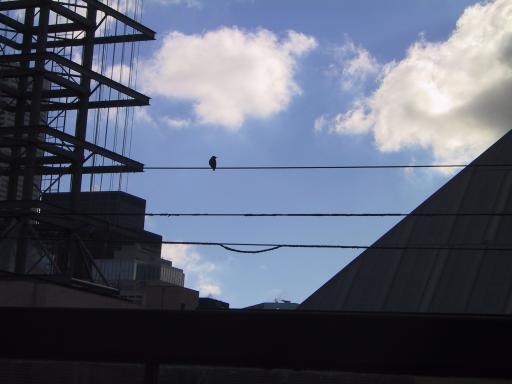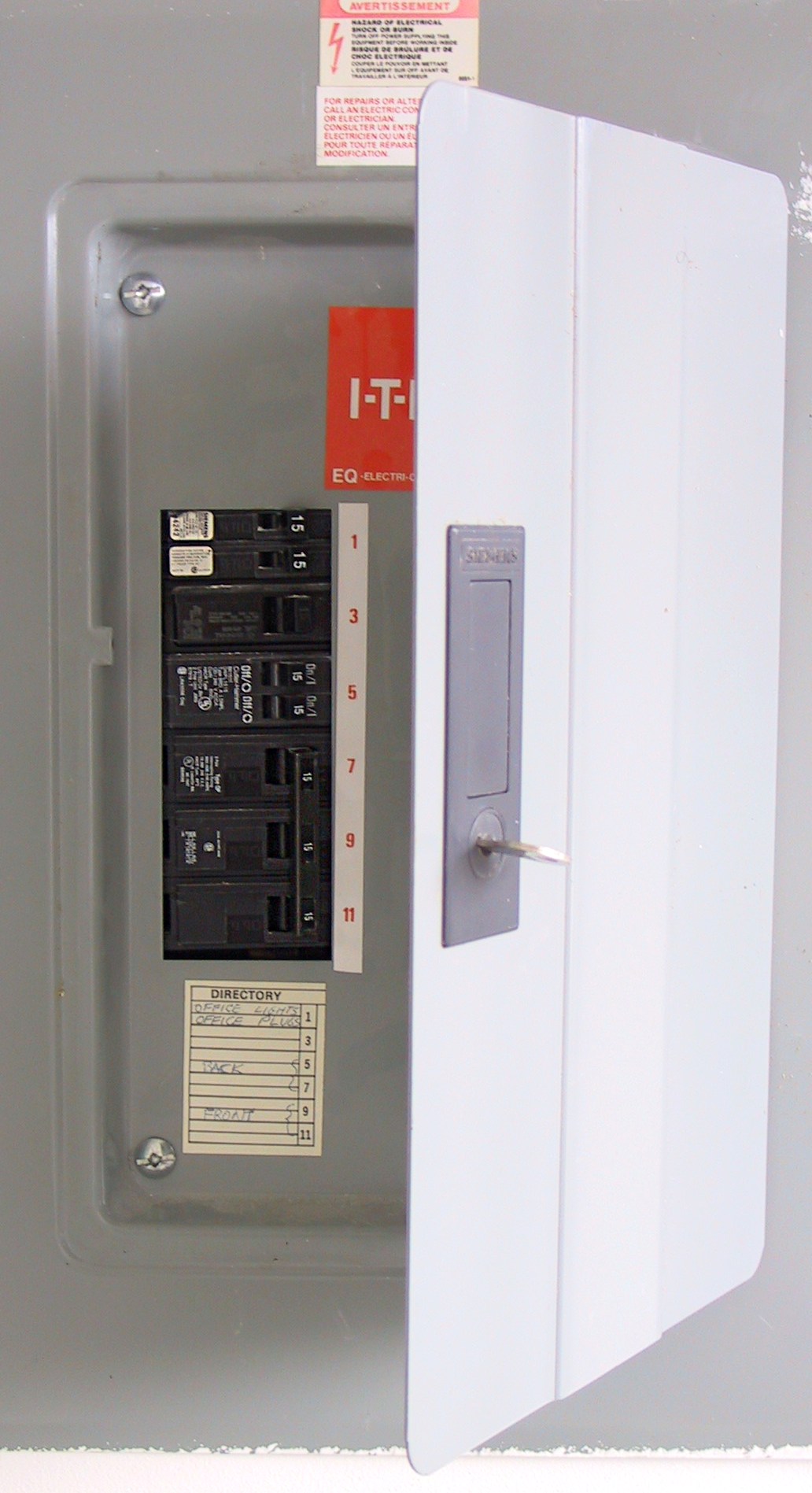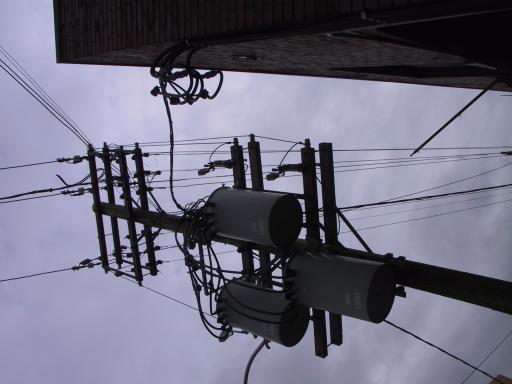

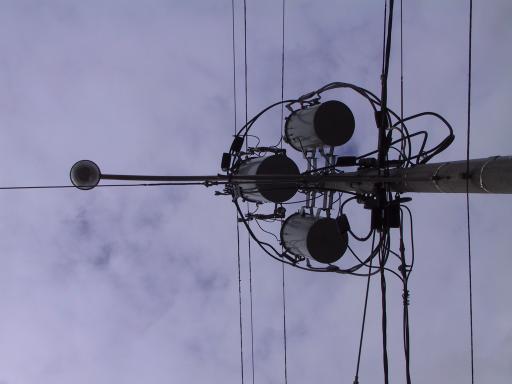


Ours are the kind that go around the pole at the same height, but some other
houses in the area have the transformers on one side of the pole, two high,
and the third one lower down.
Here are the three transformers in front of Mrs. Todd's house, that supply her
electrical power:


Here's an automotive alternator opened up, and I attached red, black, and
blue wires to the inside of it, so that it can now generate three phase
electrical power, in addition to the DC that it normall generates to charge
the car battery:

Here is a house on McCaul street, that has three phase power, as you can
see from the three black wires, and the one neutral:
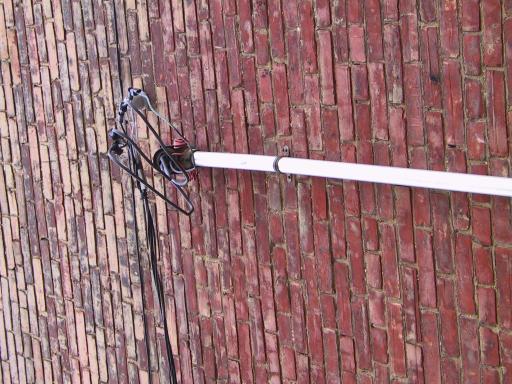
Here is a house on McCaul street that only has single phase power, as you
can see from the two black wires and one neutral wire, although the wires
are very thick, so it is an unusually high amperage service:
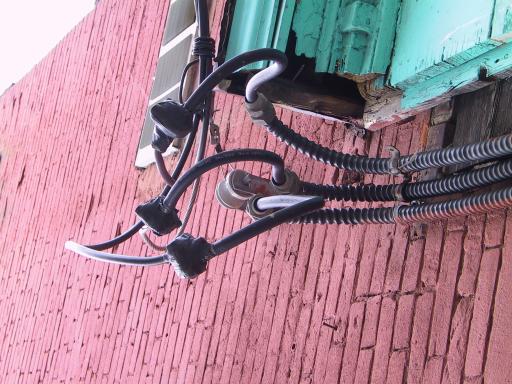

Single phase service is characterized by a single transformer, connected to
only one of the three high voltage lines (the three wires at the top of the
poles are the 13,800 volt lines, and the transformer is only connected to one
of these three lines --- I presume the return path is the neutral of the
secondary):
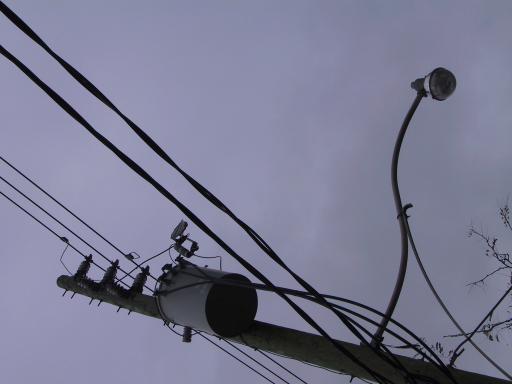
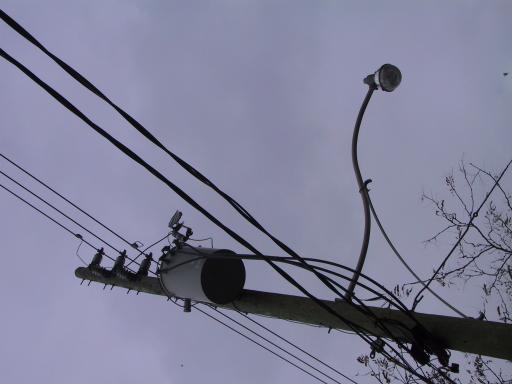
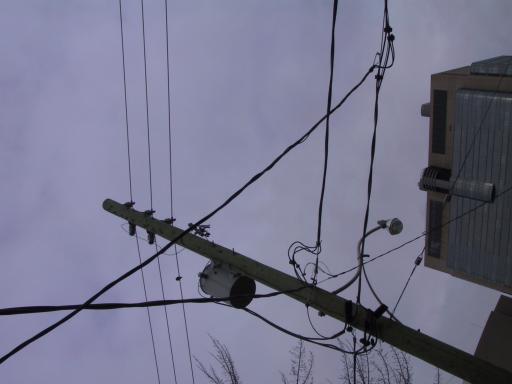
In a house with single phase service, a dryer outlet will measure 240V across the outside, and 120V from each side to the center.
But if the voltage is 208 across the outside, which might lead us to say "120 plus 120 equals 208", then we know something more complex is happening, e.g. we're looking at the distance between any two of three points on the complex plane, that fall evenly spaced on a circle of radius 120.
Ordinary tires do not provide enough insulation because the guy who fixed our roof told me that one time his crane touched one of the 13,800 volt wires and it blew out the tires on the crane, leaving four burn marks on the road.
27,600 volts is about the highest voltage that can be barehanded. Above that voltage the electricians typically wear conductive underwear and take their daily "commute" to a megavolt, or whatever.
Here is a bird on one the wires in front of our house:
